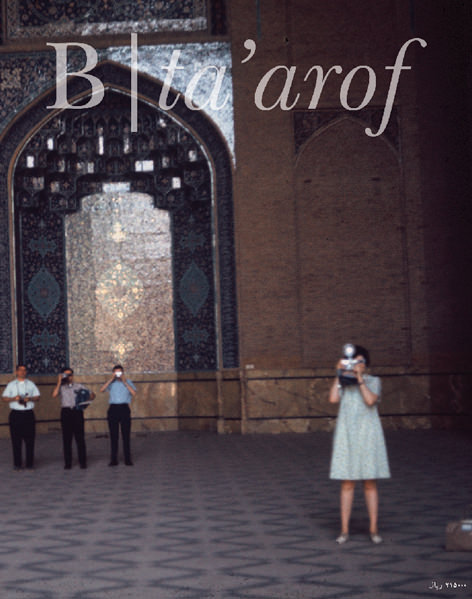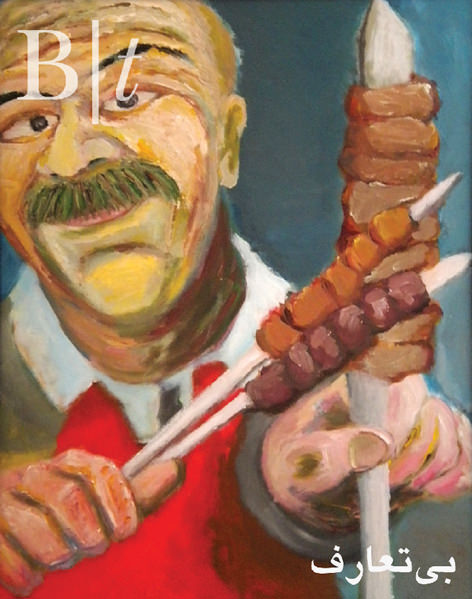Camera as Pen, Camera as Gun
Excerpt from interview between Sohail Daulatzai and Hamid Naficy from B|ta’arof
Sohail Daulatzai: I was born in Peshawar on the Afghanistan and Pakistan border and we moved to the States soon after that, to Los Angeles. My dad was very active politically and my family back home was part of the struggle against both the British and partition. But being from this contested border region, we had in many ways a healthy—and some might say, unhealthy—skepticism about the nation-state. For us, the nation-state and nationalism itself became concepts to be critical of from a very early age. As you can imagine that created a lot of anxiety about who I was and where it was that I belong.
One of the formative moments in my own political consciousness — one that gave me clarity in terms of my self-definition — was the Iran hostage crisis…We were the victims of all manner of racial hostility, projections, and national anxiety.
Hamid Naficy: Were you mistaken for being Iranian?
SD: Absolutely. We were proxy Iranians…This was a traumatic and formative experience for me. It gave me a sense of place in that while I wasn’t Iranian, I recognized that in the context of the United States I was an Other.
HN: You can imagine that Iranians felt the same way; they were beaten up because they were Iranian and yet they were against the Iranians who were holding Americans hostage.
SD: But the fact that I wasn’t Iranian is the point. Just like today, when it comes to Muslims and other racial Others, they simply have to look the part to be subject to both real and rhetorical violence. But this brings up another related point for me. You and others have talked about the emergence of Iranian media production in the ‘80s as this attempt to challenge the narrative coming out of the United States about Iran, which was all about mullahs and “rabid zealots” taking over the US embassy. In order to counter this narrative, they’ve employed or deployed this narrative of nostalgia about a pre-Islamic past: “Don’t stigmatize us as those people. We are something else.”
HN: Exactly. And wanted to create an image of a prosperous, peaceful Iran. Images of landscapes, of beautiful gardens, of mountains full of forests — these were the dominant images of the country. The problem was that Iranian exiles were only speaking to each other with these programs. There was a closed echo chamber in which they were speaking to Iranians in Los Angeles only. It’s only now that you have Iranians making their films and TV shows in different languages in order to communicate to the outside world beyond their ethnic community. But in the ‘80s they were only talking to themselves and creating a closed-in image of Iran as a nation that was victimized by foreigners. In many ways, the Islamic Republic was branded as a foreign invasion of the country. As part of their nationalism, Iranians in the U.S. — especially those who were highly politicized against the Islamic Republic — considered the rise of the Islamic Republic as the rise of Arabicized Iranians. That kind of nationalism was tinged very much with a certain amount of anti-Arab racism and Iranian chauvinism.
SD: What I hear you saying is that in trying to address this issue of the Iran hostage crisis and this narrative of Iranians as “rabid terrorists,” what the exile community ended up doing was precisely to not talk about US invasion and intervention in Iran. Rather, the discourse focused on an invasion and intervention by Arabs that happened centuries ago… What’s interesting to me in the conversation that we’re having or the residue of that story today is that in the ‘80s in particular, the exile community was almost attempting to assuage a white and dominant America by saying “Look America, we’re not like them.” And simultaneously it didn’t turn the tables and say — as it should have — that the whole reason for why this is all happening is the overthrow of Mossadegh in ‘53 and US intervention not only in Iran but in the region. I’m wondering what you think about that and how you see the genesis of this kind of diasporic politics here in the United States. How does this inform our contemporary understanding of Iran?…
Originally published in October 2012 in the inaugural issue of B|ta’arof Magazine.


